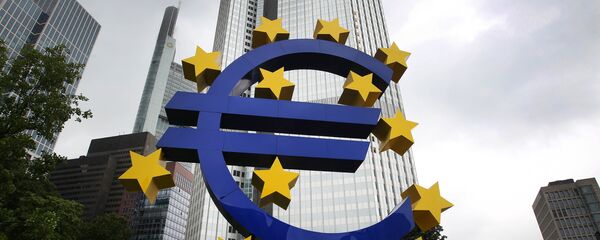Kristian Rouz – The minutes from the latest European Central Bank (ECB) policy meeting reveal while policymakers seek to gradually normalize monetary conditions, they are also aware market participants are expecting the ultra-loose policies to continue.
The document was released Thursday, and it provides valuable insights into the ECB’s further pace of monetary policy, including the Governing Council’s position on interest rates and asset purchases.
In order to avoid sending shockwaves across equity and fixed-income markets, ECB policymakers are inclined to take a more cautious approach to policy, to Northern Europe’s dismay.
The policy meeting took place on October 25-26, and the idea of extending the bond-buying program into its fourth year has some support, the minutes show. The ECB is currently buying 60 billion euros worth of governmental and commercial bonds in order to support the value of fixed-income assets, curb bond yields, and keep natural interest rates low – in line with the ECB’s own zero-negative interest rates.
“The open-ended nature of the asset purchase program might generate expectations of further extensions as the intended end date of the program approached,” the ECB’s Governing Council said. “From the current perspective, that did not appear justified in the absence of major new shocks.”
Such conditions would entail higher base borrowing costs, less affordable credit, lower bond prices, and higher bond yields. This, in turn, would restrain economic growth and inflation, but render the overall economy healthier and more predictable. Normalized monetary conditions also give the central bank a wider array of tools to respond to future crises.
The minutes also show there is a ‘broad agreement” amongst ECB policymakers that monetary stimulus is still necessary to support inflation at below, yet close to the 2-percent target.
“The envisaged purchase horizon served to underline the Governing Council’s commitment to its price stability objective and also entailed a prolonged market presence in view of possible future shocks,” the minutes read.
Germany and the rest of Northern Europe have long advocated higher ECB interest rates and tighter policies, as buoyant economic expansion in the region requires less affordable credit in order to stave off a possible over-valuation of assets, such as financial tools, properties, and means of production.
Southern Europe, however, requires higher inflation to support its economic activity, and the ECB seems to be still favoring the Eurozone’s weakest economies.
The ECB stimulus limits the regulator’s influence on the economy. The central bank has already accumulated as much as 2.2 trillion euros worth of bonds and other assets on its balance sheet, which weighs on its ability to respond to flash challenges. The US Federal Reserve, for example, is taking active steps to reduce its $4.5-trillion balance sheet of similar assets in order to boost monetary policy response efficacy.
The ECB, however, is not heading in that direction yet.
Central bank officials also said the Eurozone’s unemployment rate is down to 9.1 percent, its lowest since 2009, whilst the economy has added over 7 million jobs since the first accommodative measures were implementing, stressing the positive effects of the monetary stimulus.






